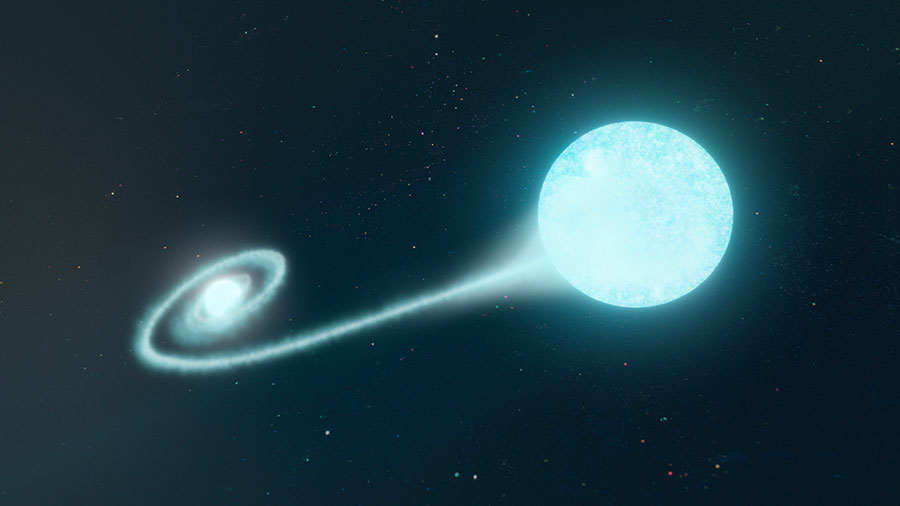Type Ia supernova detected at radio wavelengths
Astronomers have, for the first time, detected radio waves released by a Type Ia supernova, an explosion deriving from a white dwarf star, offering vital insights about white dwarf explosions. 1.

A Type Ia supernova denotes the nuclear burst of a white dwarf star. This supernova category enjoys widespread recognition; astronomers employ these supernovae to gauge cosmological distances and the Universe’s expansion. Nevertheless, the explosion mechanism behind Type Ia supernovae remains poorly understood. Unaccompanied white dwarfs do not undergo explosions, suggesting that mass accumulation from a neighboring companion star contributes to triggering the outburst. The amassed mass typically consists of the companion star’s outer layer, predominantly composed of hydrogen. However, it has been contemplated that a white dwarf could also accumulate helium from a companion star that shed its hydrogen-rich outer layer.
While the white dwarf siphons matter from its companion star, not all the substance converges onto the white dwarf. Instead, a portion of it coalesces into a cluster of circumstellar material encircling the binary star system. Anticipated are shockwaves generated by the detonation of a white dwarf within this circumstellar material, which would stimulate atoms and induce the emission of potent radio waves. Despite numerous instances of Type Ia supernovae erupting within such circumstellar clouds, astronomers had hitherto not witnessed any accompanying radio wave emissions associated with this specific type of supernova.
A multinational team of researchers, including scientists from Stockholm University and the National Astronomical Observatory of Japan, meticulously observed a Type Ia supernova that erupted in 2020. Their findings unveiled that this particular supernova was enveloped by circumstellar material predominantly composed of helium. Additionally, they successfully detected radio waves emanating from the supernova. By comparing the strength of the observed radio waves with theoretical models, they deduced that the progenitor white dwarf star had been accumulating material at a rate equivalent to about 1/1000th of the Sun’s mass per year. Remarkably, this discovery marks the first verified instance of a Type Ia supernova ignited by mass accretion from a companion star characterized by an outer layer primarily comprised of helium.
The detection of radio waves originating from a helium-rich Type Ia supernova holds the promise of enhancing our comprehension of the explosion mechanism and the pre-supernova conditions associated with this type of event. Building upon this significant breakthrough, the team intends to conduct further investigations to explore the presence of radio emissions in other instances of Type Ia supernovae. This ambitious endeavor aims to shed light on the evolutionary processes that culminate in these explosive events, further advancing our understanding of their underlying dynamics.
References
- Kool, E.C., Johansson, J., Sollerman, J. et al. (2023) A radio-detected type Ia supernova with helium-rich circumstellar material. Nature 617, 477–482 (2023). doi: 10.1038/s41586-023-05916-w ↩